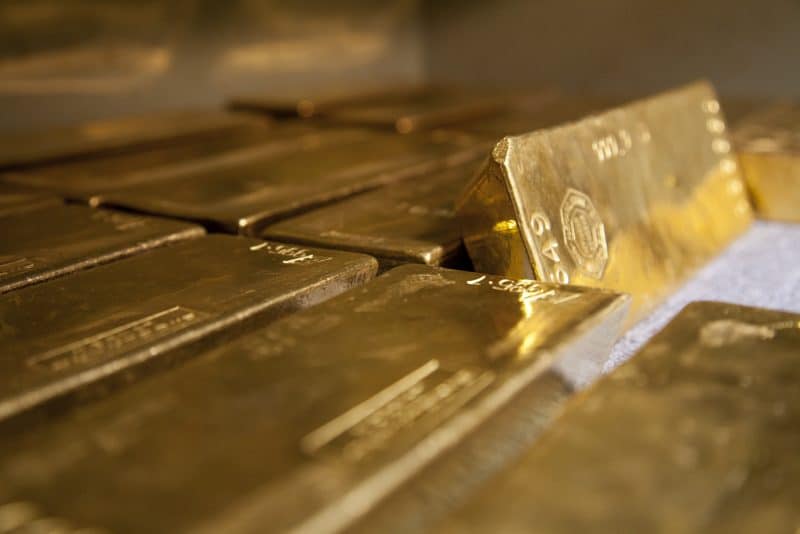Last Friday, as global media focused on the planned Iranian attack on Israel, gold prices hit another record, reaching $2,400 per ounce. Investors, fearing an escalation of conflict in the Middle East, are keen to keep this precious metal in their portfolios, which does not suggest a possibility for a correction in prices. Similarly, announced interest rate cuts in the United States are expected despite an inflation reading in March that was higher than anticipated. “The baseline scenario is an easing of monetary policy, and low rates usually favor higher gold prices,” says Dorota Sierakowska, a commodity analyst from DM BOŚ.
“Gold prices in the spring of 2024 have shown that prices above $2,000 per ounce are now the new normal in the market for this metal. The last few weeks have been a period of setting historical records, which has of course attracted many investors to this market,” says Dorota Sierakowska to Newseria Biznes.
Gold prices have been consistently above $2,000 per ounce since November 2023. A dynamic upward trend in this commodity has been ongoing since the end of February, surpassing successive psychological barriers. Last week was also record-breaking in this regard—the price of the metal on global exchanges reached $2,400 per ounce.
“The factor that favors higher gold prices is geopolitical unrest. We continue to deal with loud armed conflicts, both on the Russia-Ukraine line and on the Israel-Hamas line, and there are fears about the spread of conflict in the Middle East involving Iran. All this makes investors very keen to keep gold in their portfolios,” the commodity analyst points out. “They will certainly be closely monitoring what is happening in global politics. I mean both monetary policy and issues of armed conflicts.”
The rising gold prices are also driven by expectations of a loosening of monetary policy by the US Federal Reserve. Before the inflation data in March, the market expected the Fed to start a cycle of interest rate cuts in June and make at least three cuts this year. Now analysts speculate about two cuts—in July and November. The CPI inflation in the US was 3.5% year-over-year in March, while it was 3.2% year-over-year the month before. The reading turned out to be higher than the consensus, which anticipated a price rise level of 3.4% year-over-year. Meanwhile, the core inflation, which does not include food and energy prices, was 3.8% year-over-year in March, while the market expected 3.7% year-over-year. After a brief correction, gold prices returned to the upward trend. Key in the context of when the Fed will start interest rate cuts will be data from the coming months, concerning the condition of the US economy and the labor market.
“Despite various declarations from the US Federal Reserve, the baseline scenario is still an easing of monetary policy, that is, simply lowering interest rates. And the lower the rates, the less competition there is for gold, for example, from deposits or bonds,” explains Dorota Sierakowska. “Even if we see some slowing down in quotations or a mild corrective downturn, the prospects over the next few months or year are rather positive.”
Gold is traditionally seen by investors as a so-called safe haven, and it is expected that prices of this metal should rise along with the decrease in interest rates, which reduces the yield of bonds and other income-generating assets. This is also correlated with the dollar: declines in the valuation of the American currency usually accompany a strengthening of gold prices.
“The dollar is a currency that has undergone many turbulences and is still a fiat currency, unlike gold. Currently, investors have increasingly less trust in fiat currencies. That’s why they add gold to their portfolios, often in physical form, as a complement to their portfolio of more tangible investments. What happens with the dollar will certainly impact the prices of gold—after all, gold prices are quoted in this currency. And if the easing of monetary policy by the US Fed really progresses, then the dollar may be valued lower, which in turn may favor higher gold valuations,” says the analyst from DM BOŚ. “In the gold market right now, we have factors that should favor further increases.”
As she indicates, additional fuel for gold prices is currently also the tense geopolitical situation, which includes the war in Ukraine, escalation of conflict in the Middle East, concerns about oil supply, and unrest regarding potential clashes over Taiwan.
“We are still dealing with loud armed conflicts along the Russia-Ukraine line as well as Israel-Hamas, and there are also fears about the spread of conflict in the Middle East involving Iran. And all this causes investors to very willingly keep gold in their portfolios. Therefore, even if we were to see some slowing down of prices or a mild corrective downturn in the coming time, in my opinion, the prospects over the next few months or year are positive,” assesses Dorota Sierakowska.
Another factor that investors will be watching is also the sales results of gold, such as in China or India.
“China is a very important player in the gold market. Essentially, in terms of demand for gold on the global market, we have two leaders who often swap the first place but are very close to each other: China and India. What happens in these countries also economically has a big impact on how gold demand is shaped. So certainly the condition of the Chinese economy will also have an impact on how wealthy that society is and how eagerly it will supplement its portfolios with gold,” explains the expert. “Right now, there is some slowing down of physical gold sales in both countries, which results from high prices. So the question is whether local consumers will adjust to increasingly higher prices, or whether this drop in sales will somewhat slow down the gold prices.”
